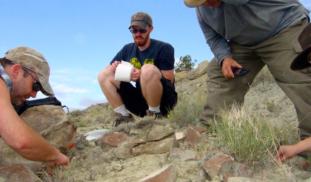Please wait...
About This Project
In 2014, in a remote and barren corner of the Bighorn Basin, NJSM paleontologists and participants in the annual Paleontology Field School made a remarkable discovery. We found at least three partial dinosaur skeletons, including the world's most famous predator - Tyrannosaurus rex. With YOUR support, our team will return in 2015 to excavate the skeletons and bring them back to our research labs for preparation, study, education, and exhibition.
More Lab Notes From This Project

Browse Other Projects on Experiment
Related Projects
Uncovering a new era of climate change during the Ice Age of the Black Hills
Mammoth Site scientists, partners, and volunteers are on a mission to understand climate change in the Black...
Join Bighorn Basin Paleontological Institute's 2018 Field Expedition
Work alongside paleontologists as we collect, excavate and document the fossilized remains of the ancient...
Bighorn Basin Paleontological Institute's 2017 Field Expedition
This is an invitation to work alongside paleontologists for a week (or more!) this summer as we collect...



